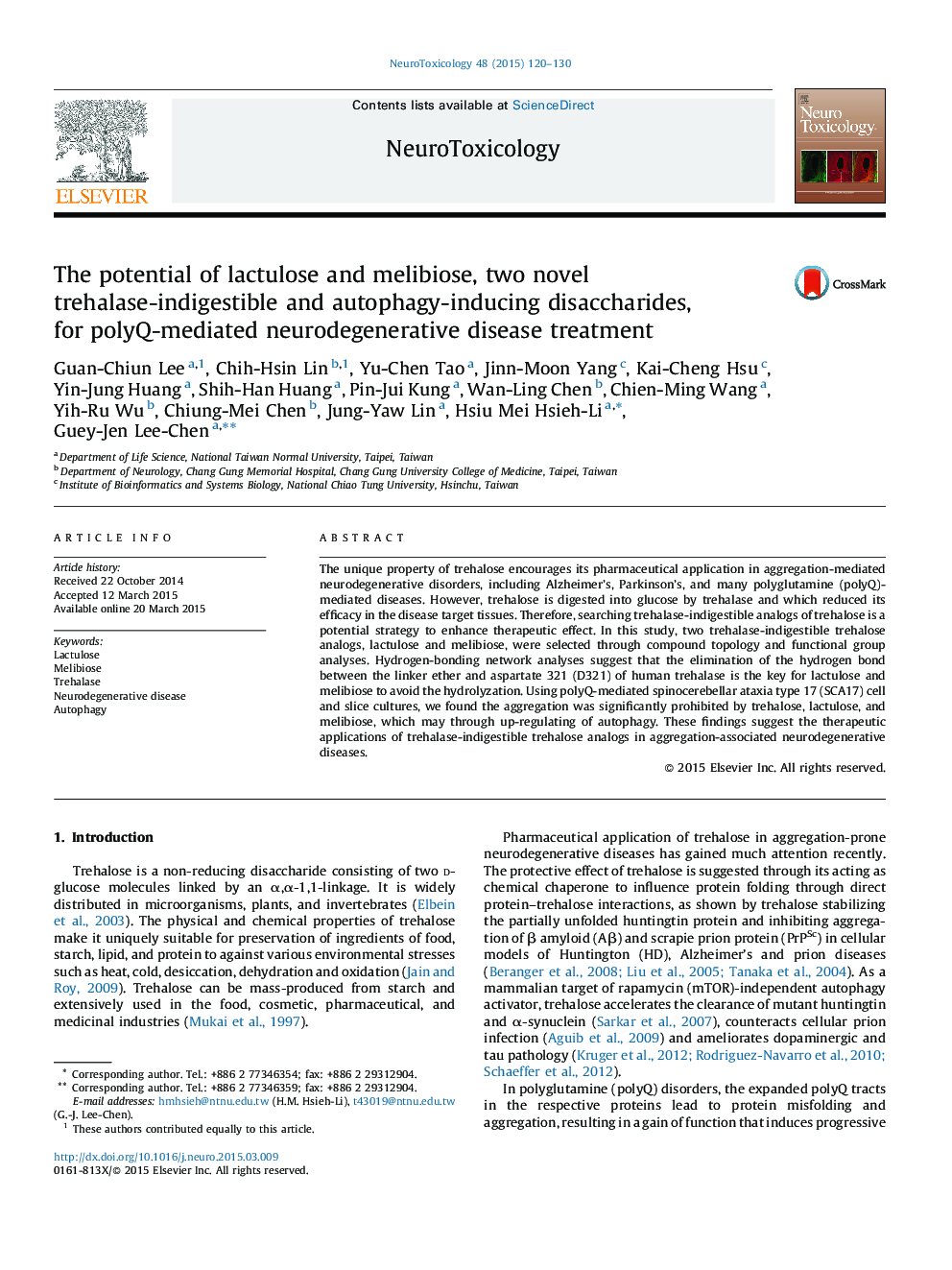| Article ID | Journal | Published Year | Pages | File Type |
|---|---|---|---|---|
| 2589525 | NeuroToxicology | 2015 | 11 Pages |
•Two trehalase-indigestible trehalose analogs, lactulose and melibiose, are selected through compound topology and functional group analyses.•PolyQ aggregation is significantly reduced by lactulose and melibiose.•Lactulose and melibiose are two novel autophagy-inducing small molecules to inhibit polyQ aggregation as trehalose.
The unique property of trehalose encourages its pharmaceutical application in aggregation-mediated neurodegenerative disorders, including Alzheimer's, Parkinson's, and many polyglutamine (polyQ)-mediated diseases. However, trehalose is digested into glucose by trehalase and which reduced its efficacy in the disease target tissues. Therefore, searching trehalase-indigestible analogs of trehalose is a potential strategy to enhance therapeutic effect. In this study, two trehalase-indigestible trehalose analogs, lactulose and melibiose, were selected through compound topology and functional group analyses. Hydrogen-bonding network analyses suggest that the elimination of the hydrogen bond between the linker ether and aspartate 321 (D321) of human trehalase is the key for lactulose and melibiose to avoid the hydrolyzation. Using polyQ-mediated spinocerebellar ataxia type 17 (SCA17) cell and slice cultures, we found the aggregation was significantly prohibited by trehalose, lactulose, and melibiose, which may through up-regulating of autophagy. These findings suggest the therapeutic applications of trehalase-indigestible trehalose analogs in aggregation-associated neurodegenerative diseases.
